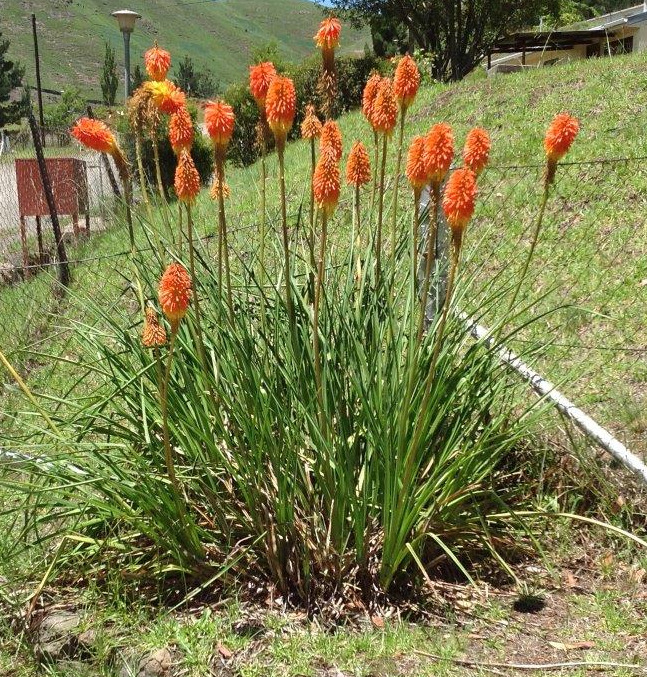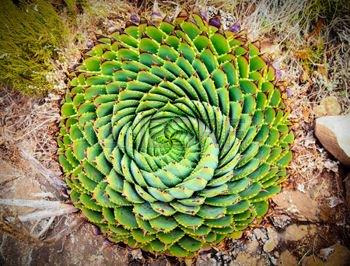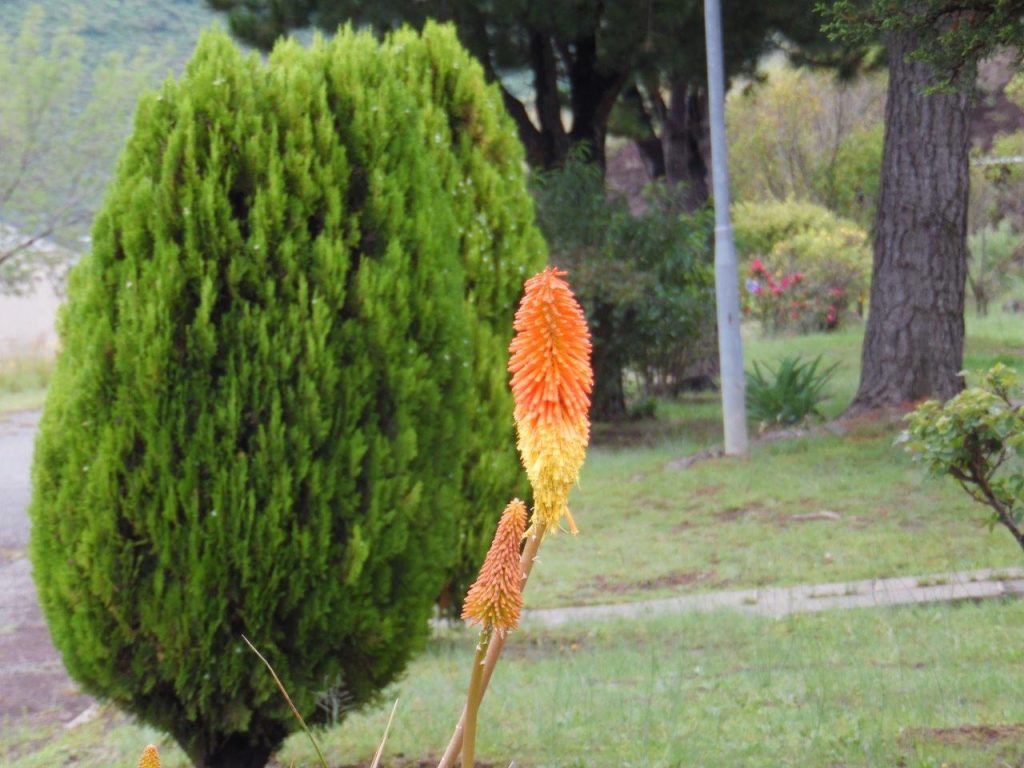- Home
- About
Discover the Kingdom in the Sky
ABOUT LESOTHO
Nestled in the heart of Southern Africa, Lesotho is a unique gem that captivates visitors with its breathtaking mountain landscapes, rich cultural heritage, and unparalleled adventure opportunities. Known as the Kingdom in the Sky, Lesotho stands out as the only country in the world entirely above 1,400 meters (4,593 feet) in elevation, offering panoramic vistas, cool mountain air, and an unspoiled natural environment that’s perfect for exploration.
Lesotho is a land of contrasts, where ancient traditions blend seamlessly with modern development. From the iconic Basotho blanket to the warm hospitality of its people, the Basotho culture is deeply rooted in community, resilience, and a strong connection to nature. Whether you’re visiting historic landmarks like Thaba Bosiu, marvelling at ancient dinosaur footprints, or experiencing the vibrant colours of a traditional village, Lesotho provides a cultural immersion unlike any other.
For adventurers, Lesotho’s rugged terrain is a paradise for hiking, pony trekking, and off-road cycling. It’s home to the Maletsunyane Falls, one of the tallest single-drop waterfalls in the Southern Hemisphere, and the world-renowned Afri-ski Mountain Resort, which offers thrilling winter sports in a spectacular alpine setting. Meanwhile, nature lovers can explore Ts’ehlanyane National Park or the high-altitude wetlands of Sehlabathebe National Park, a UNESCO World Heritage Site.
Lesotho invites you to experience its majestic mountains, ancient history, and vibrant culture. Whether you seek tranquillity in nature, adrenaline-fueled adventures, or a deeper understanding of African heritage, the Kingdom in the Sky promises an unforgettable journey. Explore Lesotho and discover a world above the clouds.
For adventurers, Lesotho’s rugged terrain is a paradise for hiking, pony trekking, and off-road cycling. It’s home to the Maletsunyane Falls, one of the tallest single-drop waterfalls in the Southern Hemisphere, and the world-renowned Afri-ski Mountain Resort, which offers thrilling winter sports in a spectacular alpine setting. Meanwhile, nature lovers can explore Ts’ehlanyane National Park or the high-altitude wetlands of Sehlabathebe National Park, a UNESCO World Heritage Site.
Lesotho invites you to experience its majestic mountains, ancient history, and vibrant culture. Whether you seek tranquillity in nature, adrenaline-fueled adventures, or a deeper understanding of African heritage, the Kingdom in the Sky promises an unforgettable journey. Explore Lesotho and discover a world above the clouds.
Geography
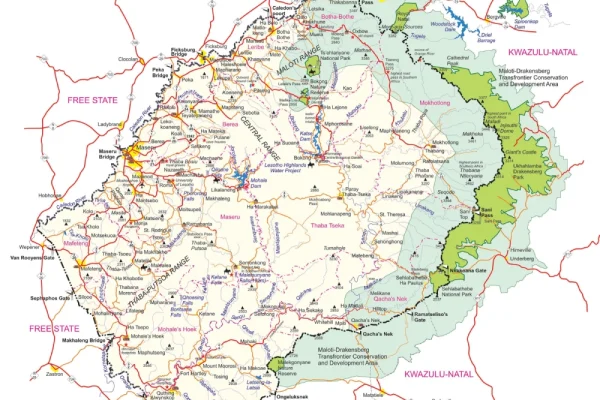
Lesotho, a landlocked country in Southern Africa, is a geographical marvel entirely surrounded by South Africa. Known as the Kingdom in the Sky, it holds the unique distinction of being the only country in the world entirely situated above 1,400 meters (4,593 feet) in elevation. Its high-altitude terrain offers breathtaking vistas and a temperate mountain climate, making it a destination unlike any other. Positioned between 28°S and 30°S latitude, Lesotho’s location combines subtropical elements with its dramatic highland geography.
The country spans an area of approximately 30,355 square kilometres (11,720 square miles) and is dominated by the majestic Maluti and Drakensberg Mountain ranges. These mountains shape Lesotho’s rugged landscapes of steep cliffs, plateaus, and valleys. The Thabana Ntlenyana, which translates to “Beautiful Little Mountain” in Sesotho, is Lesotho’s highest point and the highest in Southern Africa. Rising to an impressive 3,482 meters (11,424 feet) above sea level, it offers incredible panoramic views and is a popular challenge for hikers and climbers seeking adventure.
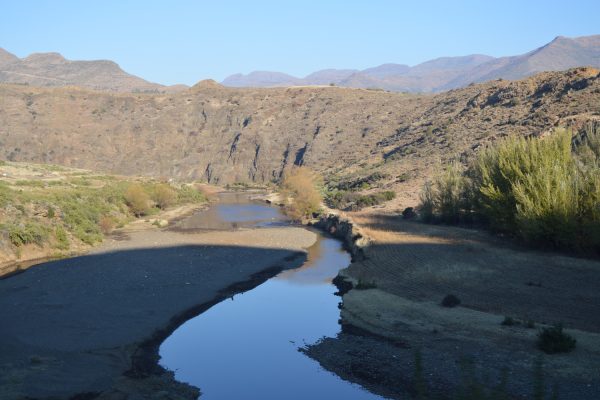
Lesotho is a water-rich nation, with its mountain streams feeding into major rivers such as the Senqu River (Orange River), which begins in the highlands and flows across Southern Africa. These rivers and their tributaries carve deep valleys and gorges, adding to the country’s dramatic topography. Additionally, the Lesotho Highlands Water Project, featuring iconic dams like Katse and Mohale, showcases how the country harnesses its geography to provide water and hydroelectric power to the region.
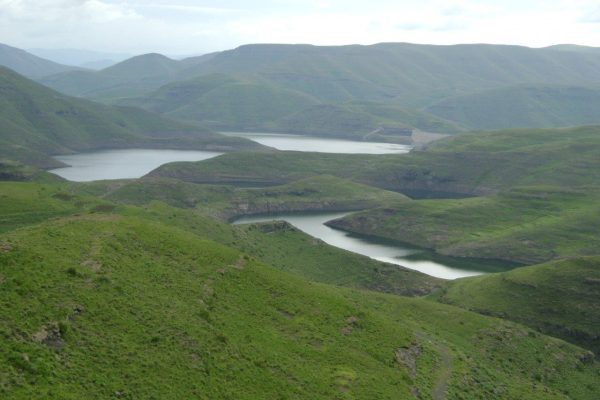
The varied geography of Lesotho also supports unique ecosystems, from alpine grasslands to high-altitude wetlands. The Sehlabathebe National Park, a UNESCO World Heritage Site, exemplifies these pristine landscapes, featuring sandstone formations, rare plant species, and abundant birdlife. For visitors, Lesotho’s dramatic geography offers unparalleled opportunities for exploration, from hiking its rugged trails to marvelling at cascading waterfalls, serene valleys, and its towering peaks. Whether you’re seeking adventure or serenity, Lesotho’s landscape is sure to leave a lasting impression.
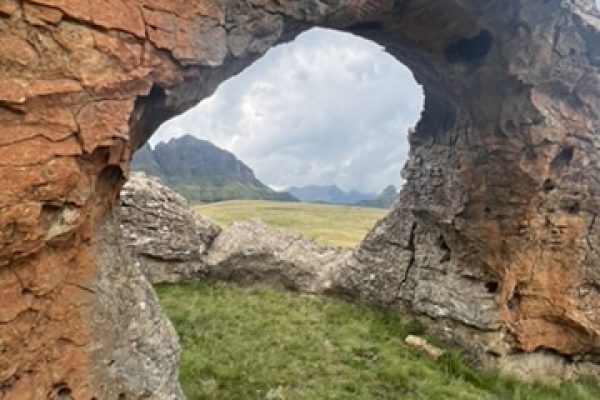
Districts, Cities & Towns
Lesotho is divided into ten districts, each offering unique landscapes, historical significance,
and cultural highlights. Below are descriptions of the key districts, their main towns, and their
distances from Maseru, the capital city.
Maseru
Maseru District is home to Maseru, the capital and largest city of Lesotho. Situated along the Caledon River bordering South Africa, Maseru serves as the economic, political, and administrative hub of the country. It is approximately 0 km from itself as the capital city. The city is a blend of modern development and cultural heritage, featuring government buildings, embassies, shopping centres, and vibrant marketplaces where visitors can experience traditional Basotho crags and cuisine. Maseru is also home to key institutions such as the National University of Lesotho’s administrative offices and major financial centres, making it the heartbeat of the country’s economic activities.
Maseru is the main gateway into Lesotho, with Moshoeshoe I International Airport serving domestic and international flights, and the Maseru Bridge border post providing direct road access to South Africa’s Free State province. The city offers a variety of accommodations ranging from luxury hotels to budget-friendly guesthouses, catering to both business travelers and tourists. Landmarks such as Thaba Bosiu, the historic mountain fortress of King Moshoeshoe I, and the Royal Palace add to the city’s rich historical significance. Additionally, visitors can explore sites like the Pioneer Mall, Maseru Golf Club, and Basotho Hat, a popular cultural attraction showcasing traditional Basotho crags.
Despite its rapid modernization, Maseru retains a unique charm, with its blend of urban vibrancy and proximity to Lesotho’s stunning highland landscapes. Just a short drive from the city, visitors can access outdoor adventures such as hiking, pony trekking, and scenic drives through the Maluti Mountains. Maseru’s strategic location, cultural offerings, and modern conveniences make it an essential starting point for any journey through Lesotho.
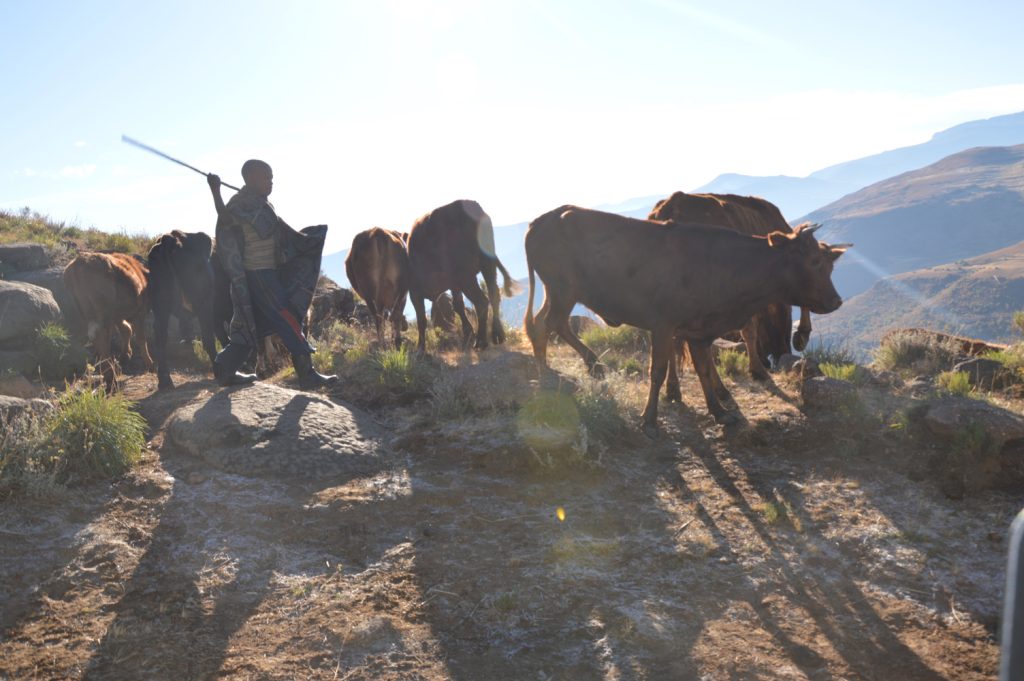
Berea
Berea District lies to the northeast of Maseru, with its capital Teyateyaneng (TY) located approximately 40 km (25 miles) from Maseru. TY is known for its rich cultural heritage, including traditional Basotho crafts such as weaving and pottery. The district is home to rural landscapes, historical sites, and picturesque highlands, making it a great stop for visitors exploring Lesotho’s countryside.
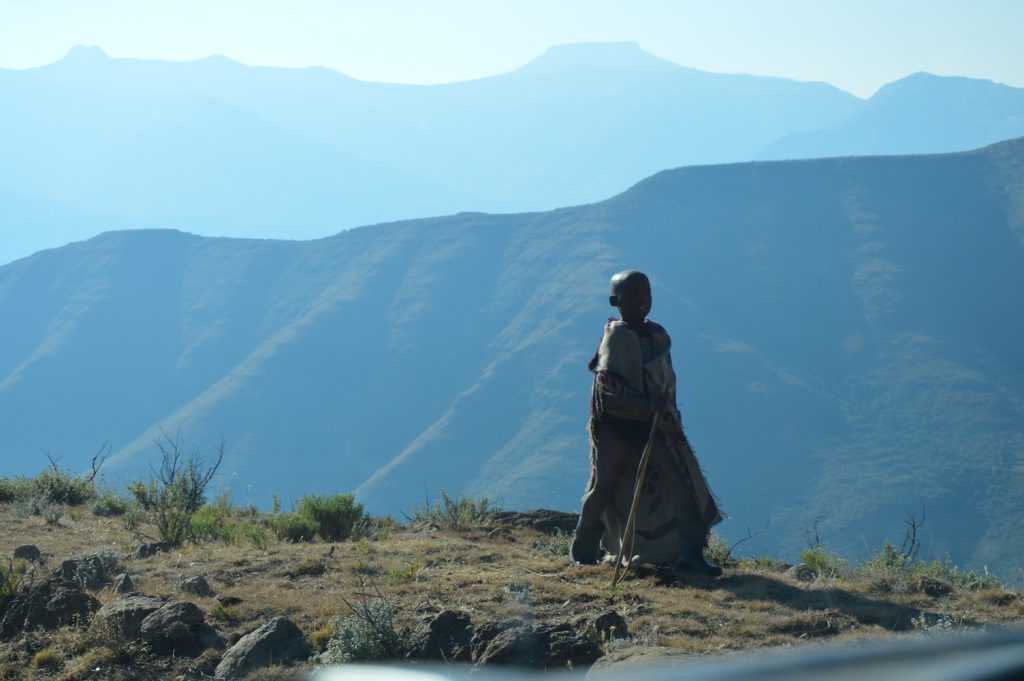
Leribe
Leribe District is located in northern Lesotho, with Hlotse (ogen referred to as Leribe) as its main town, approximately 90 km (56 miles) from Maseru. The district is known for its agricultural importance, vibrant local markets, and scenic views of the Maloti Mountains. It serves as a gateway to popular destinations such as Ts’ehlanyane National Park and Katse Dam.
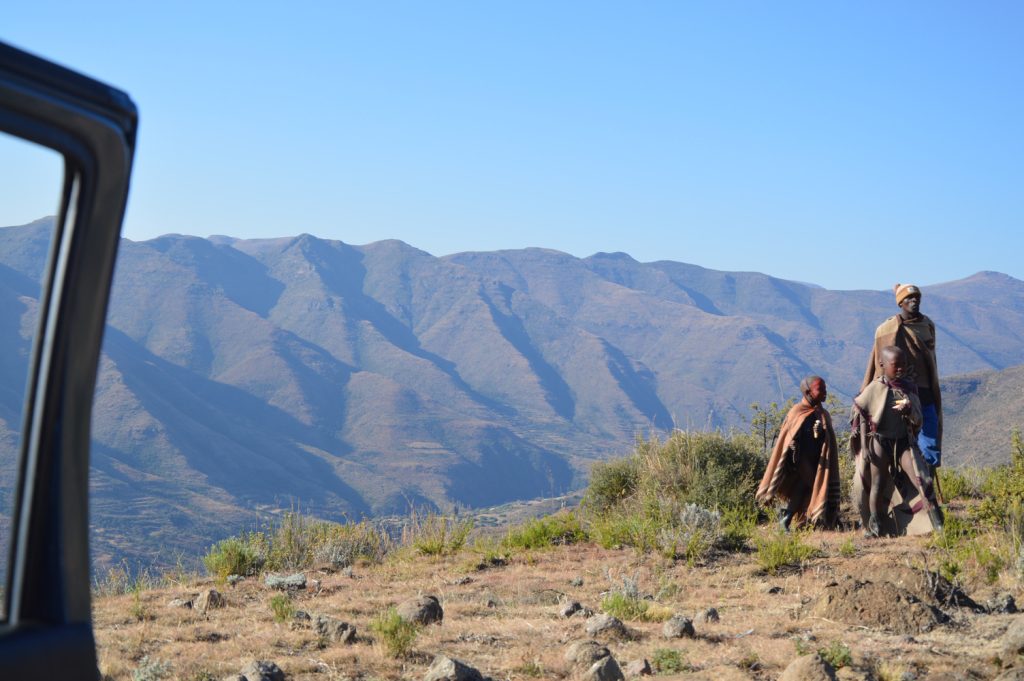
Butha Buthe
Situated in the north, Butha-Buthe town serves as the capital of the Butha-Buthe District, located approximately 125 km (78 miles) from Maseru. This district is well known for its close proximity to the Afri-ski Mountain Resort, making it a popular destination for winter sports enthusiasts. The area also features historical sites such as the Moteng Pass and scenic landscapes ideal for outdoor adventures.
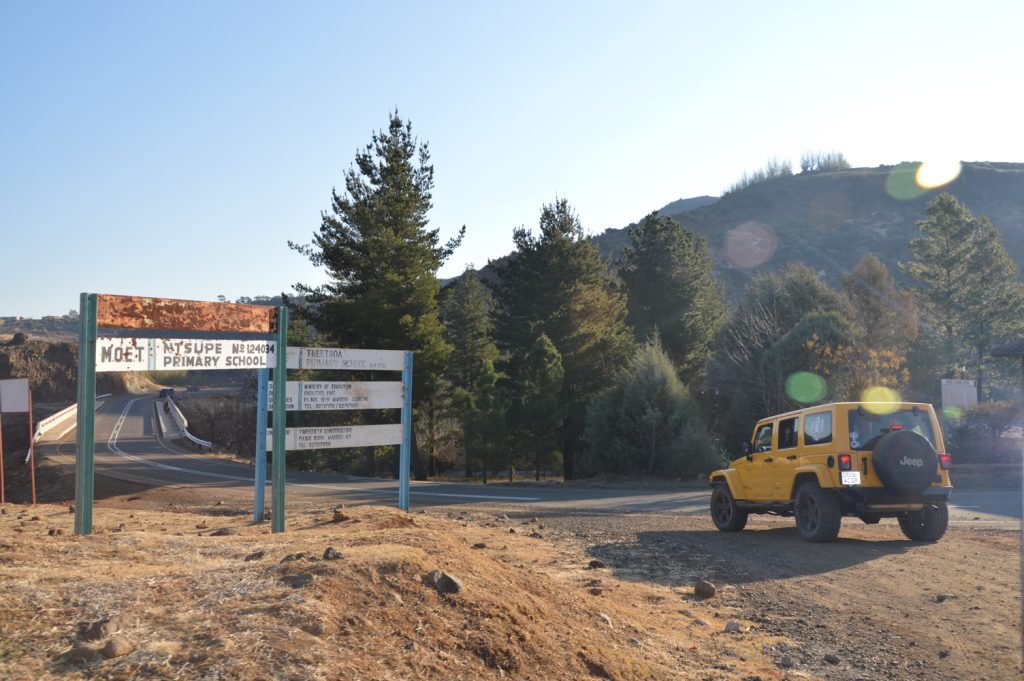
Mokhotlong
Mokhotlong District, located in the far northeast of Lesotho, has Mokhotlong town as its capital, approximately 250 km (155 miles) from Maseru. It is the location of the Polihali Dam, which is still under construction, and is one of the 3 dams that form a part of the Lesotho Highlands Water Project. It is one of the most remote and rugged areas of Lesotho, offering breathtaking mountain scenery. The district is home to Thabana Ntlenyana, the highest peak in Southern Africa, and is the main access point to the Sani Pass, a thrilling route connecting Lesotho to South Africa.
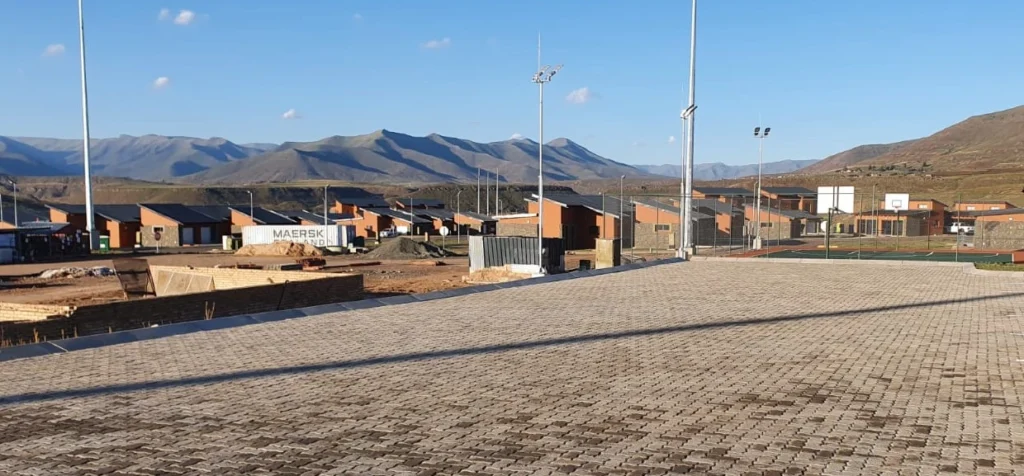
Thaba Tseka
Thaba-Tseka District is located in the central highlands, with Thaba-Tseka town as its capital, approximately 200 km (124 miles) from Maseru. The district is home to Katse Dam, a significant part of the Lesotho Highlands Water Project, and features some of the most dramatic mountain landscapes in the country. It is an excellent destination for hiking and nature enthusiasts looking for adventure in the highlands.
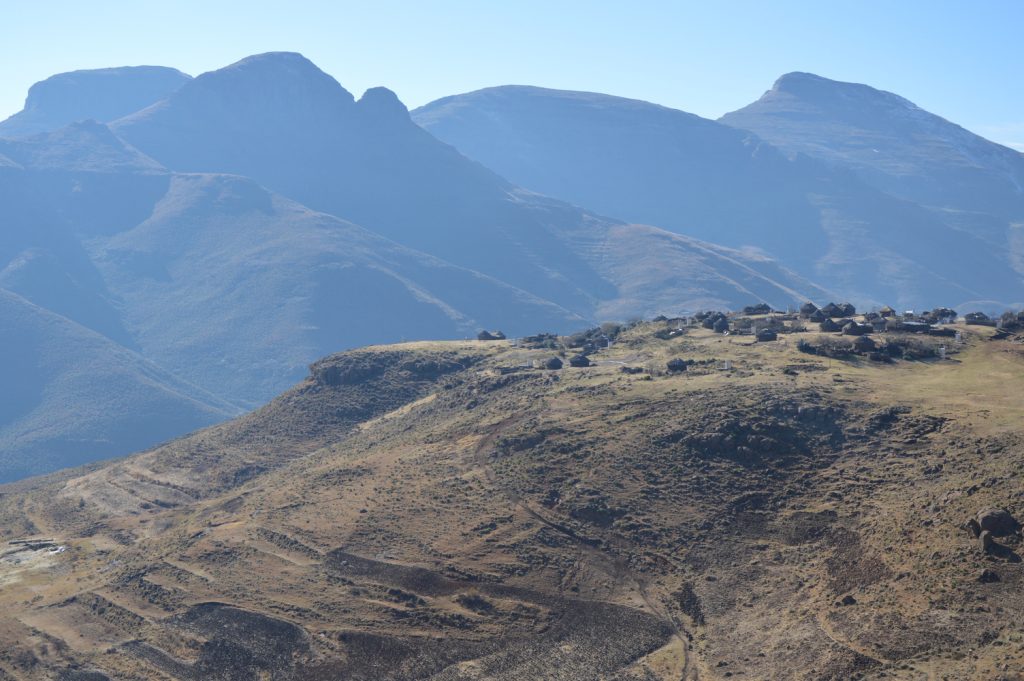
Mafeteng
Mafeteng District, located south of Maseru, has Mafeteng town as its capital, approximately 75 km (47 miles) from Maseru. It is known for its historical role in Lesotho’s independence movement and its agricultural contributions. The district is a convenient stop for travellers heading to the southern part of Lesotho or exploring the Mohale’s Hoek and Quthing districts.
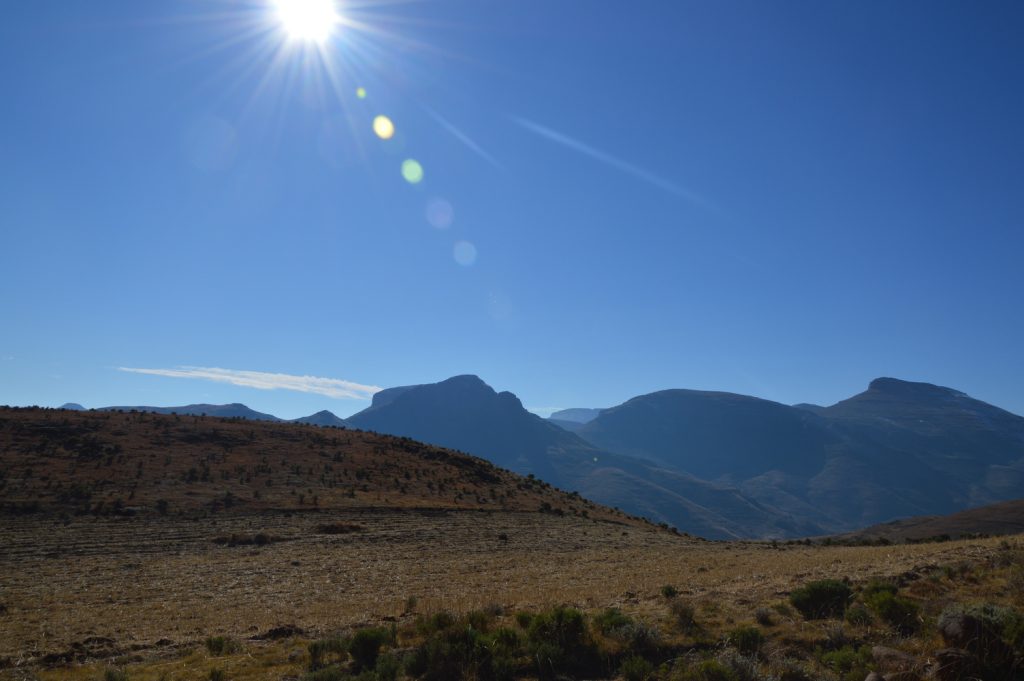
Mohale's Hoek
Mohale’s Hoek District lies further south of Mafeteng, with Mohale’s Hoek town as its capital, approximately 120 km (75 miles) from Maseru. The district is known for its rolling hills, rich farmland, and historical significance. Visitors can explore its scenic landscapes, local markets, and cultural sites, offering a blend of history and tradi9onal Basotho life.
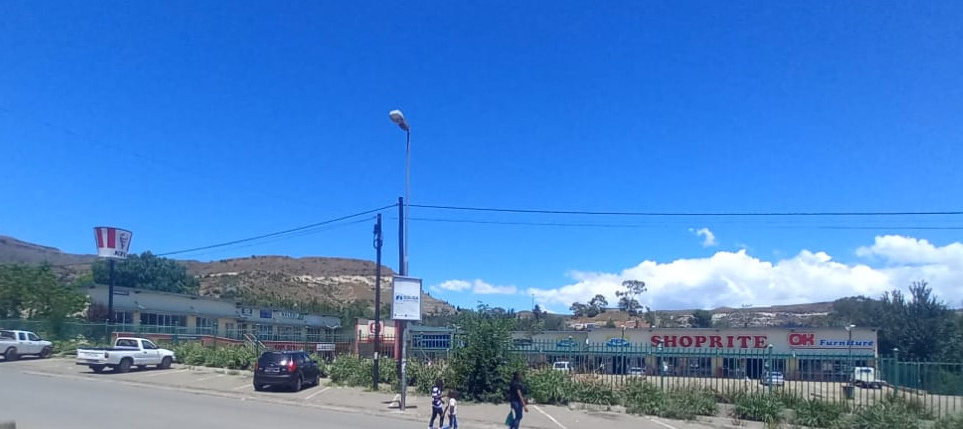
Quthing
Quthing District, located in the southernmost part of Lesotho, has Quthing (Moyeni) as its capital, approximately 175 km (109 miles) from Maseru. The district is rich in historical and archaeological significance, home to dinosaur footprints and rock art leg behind by the San people. The area’s rolling hills and fertile land make it a beautiful yet lesser-explored part of Lesotho.
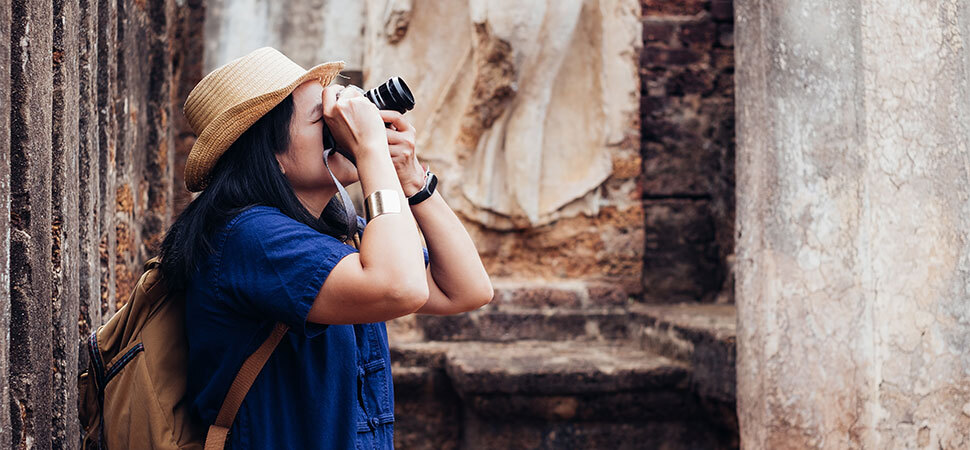
Qacha's Nek
Qacha’s Nek District, situated in the southeastern part of Lesotho, has Qacha’s Nek town as its capital, located approximately 200 km (124 miles) from Maseru. The district serves as a key border crossing between Lesotho and South Africa. It is known for its proximity to Sehlabathebe National Park, a UNESCO World Heritage Site that offers breathtaking natural scenery, unique rock formations, and diverse wildlife. The district is a gateway to some of Lesotho’s most remote and untouched landscapes, making it a paradise for nature lovers and adventurers.

Berea
Berea District lies to the northeast of Maseru, with its capital Teyateyaneng (TY) located
approximately 40 km (25 miles) from Maseru. TY is known for its rich cultural heritage, including
traditional Basotho crafts such as weaving and pottery. The district is home to rural landscapes,
historical sites, and picturesque highlands, making it a great stop for visitors exploring Lesotho’s
countryside.

Leribe
Leribe District is located in northern Lesotho, with Hlotse (ogen referred to as Leribe) as its
main town, approximately 90 km (56 miles) from Maseru. The district is known for its
agricultural importance, vibrant local markets, and scenic views of the Maloti Mountains. It
serves as a gateway to popular destinations such as Ts’ehlanyane National Park and Katse Dam.

Butha Buthe
Situated in the north, Butha-Buthe town serves as the capital of the Butha-Buthe District,
located approximately 125 km (78 miles) from Maseru. This district is well known for its close
proximity to the Afri-ski Mountain Resort, making it a popular destination for winter sports
enthusiasts. The area also features historical sites such as the Moteng Pass and scenic
landscapes ideal for outdoor adventures.

Mokhotlong
Mokhotlong District, located in the far northeast of Lesotho, has Mokhotlong town as its
capital, approximately 250 km (155 miles) from Maseru. It is the location of the Polihali Dam,
which is still under construction, and is one of the 3 dams that form a part of the Lesotho
Highlands Water Project. It is one of the most remote and rugged areas of Lesotho, offering
breathtaking mountain scenery. The district is home to Thabana Ntlenyana, the highest peak in
Southern Africa, and is the main access point to the Sani Pass, a thrilling route connecting
Lesotho to South Africa.
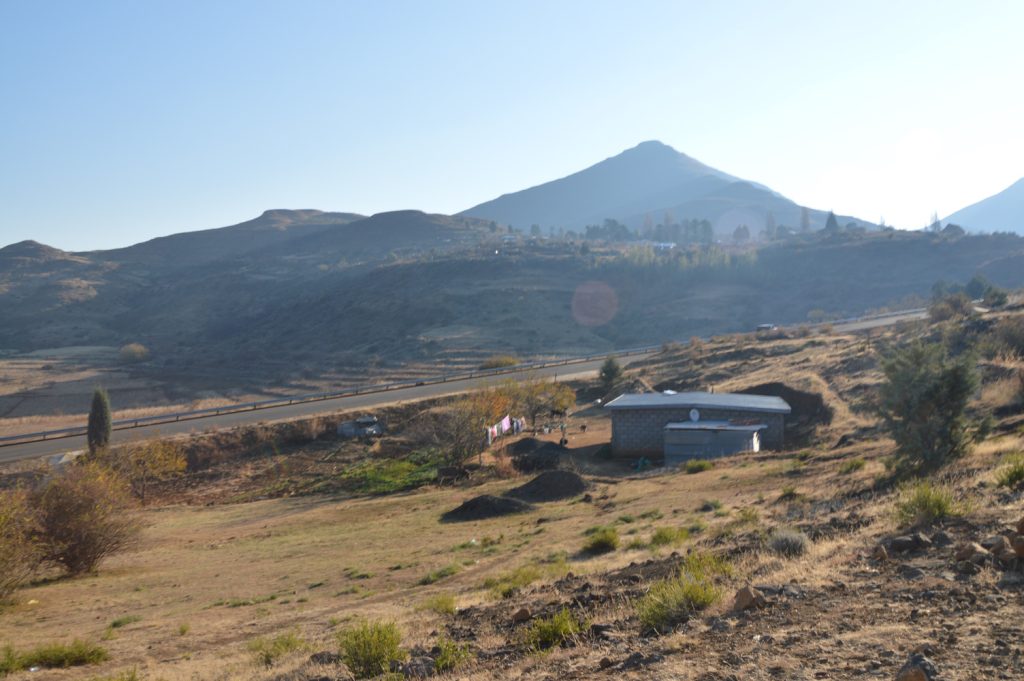
Thaba Tseka
Thaba-Tseka District is located in the central highlands, with Thaba-Tseka town as its capital,
approximately 200 km (124 miles) from Maseru. The district is home to Katse Dam, a significant
part of the Lesotho Highlands Water Project, and features some of the most dramatic mountain
landscapes in the country. It is an excellent destination for hiking and nature enthusiasts looking
for adventure in the highlands.

Mafeteng
Mafeteng District, located south of Maseru, has Mafeteng town as its capital, approximately 75
km (47 miles) from Maseru. It is known for its historical role in Lesotho’s independence
movement and its agricultural contributions. The district is a convenient stop for travellers
heading to the southern part of Lesotho or exploring the Mohale’s Hoek and Quthing districts.

Mohale's Hoek
Mohale’s Hoek District lies further south of Mafeteng, with Mohale’s Hoek town as its capital,
approximately 120 km (75 miles) from Maseru. The district is known for its rolling hills, rich
farmland, and historical significance. Visitors can explore its scenic landscapes, local markets,
and cultural sites, offering a blend of history and tradi9onal Basotho life.

Quthing
Quthing District, located in the southernmost part of Lesotho, has Quthing (Moyeni) as its
capital, approximately 175 km (109 miles) from Maseru. The district is rich in historical and
archaeological significance, home to dinosaur footprints and rock art leg behind by the San
people. The area’s rolling hills and fertile land make it a beautiful yet lesser-explored part of
Lesotho.

Qacha's Nek
Qacha’s Nek District, situated in the southeastern part of Lesotho, has Qacha’s Nek town as its capital, located approximately 200 km (124 miles) from Maseru. The district serves as a key border crossing between Lesotho and South Africa. It is known for its proximity to Sehlabathebe National Park, a UNESCO World Heritage Site that offers breathtaking natural scenery, unique rock formations, and diverse wildlife. The district is a gateway to some of Lesotho’s most remote and untouched landscapes, making it a paradise for nature lovers and adventurers.

Weather and Climate
Lesotho features a temperate, high-altitude climate that varies significantly between its lowland and highland regions – offering experiences ranging from warm sunshine to colder, snow-dusted mountain vistas.
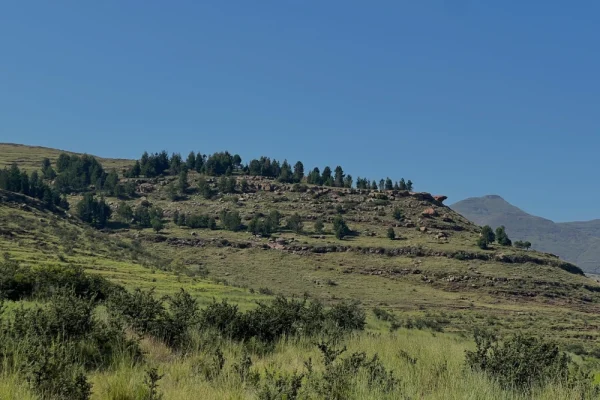
In the lowlands (including Maseru and surrounding areas), summers (October–April) are warm and sunny, with daytime highs frequently reaching 28–32 °C. These months also bring most of the annual 600–800 mm of rainfall, often in the form of afternoon thunderstorms. In winter (May–September), the weather becomes dry and crisp, with daytime temperatures in the low to mid-teens Celsius and night-time lows dropping to –7 °C on occasion.
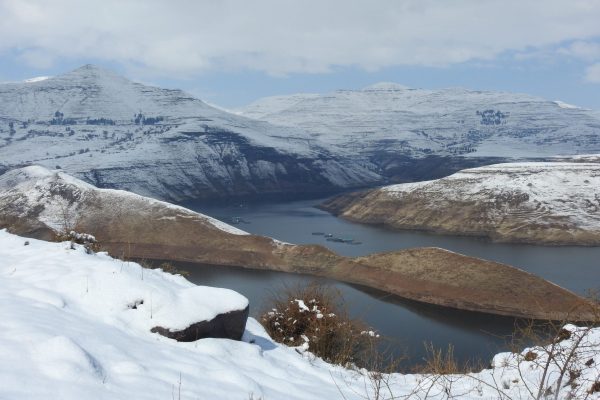
The highlands, including areas like Katse Dam and Afri-ski, see much cooler and more changeable weather. Summer average highs hover around 18–22 °C, but nights can still fall to freezing, with frost and hail common. Winter brings severe cold, with daytime highs around 0–7 °C and temperatures occasionally plummeting to –18 °C during clear nights. Snowfalls often blanket higher elevations from May to September, and sudden shifts between sunshine, mist, rain, or freezing conditions are common.
Weather and Climate
Lesotho’s Climate Diversity
Visitor Tips & Warnings
- Always check the weather forecast before traveling into the mountains, especially in winter months.
- Pack warm layers, even in summer, if you plan to visit high-altitude areas — temperatures can drop suddenly.
- Roads may become slippery or inaccessible during snow or heavy rain; travel with caution and carry essentials.
- UV radiation can be strong at high elevations — wear sunscreen and sunglasses throughout the year.
Understanding Lesotho’s climate will help you prepare for a safe and enjoyable visit — whether you’re basking in the summer sun or marveling at snow-covered peaks in winter.
Weather and Climate
Lesotho’s Climate Diversity
Lesotho features a temperate, high-altitude climate that varies significantly between its lowland and highland regions – offering experiences ranging from warm sunshine to colder, snow-dusted mountain vistas.
In the lowlands (including Maseru and surrounding areas), summers (October–April) are warm and sunny, with daytime highs frequently reaching 28–32 °C. These months also bring most of the annual 600–800 mm of rainfall, often in the form of afternoon thunderstorms. In winter (May–September), the weather becomes dry and crisp, with daytime temperatures in the low to mid-teens Celsius and night-time lows dropping to –7 °C on occasion.
The highlands, including areas like Katse Dam and Afri-ski, see much cooler and more changeable weather. Summer average highs hover around 18–22 °C, but nights can still fall to freezing, with frost and hail common. Winter brings severe cold, with daytime highs around 0–7 °C and temperatures occasionally plummeting to –18 °C during clear nights. Snowfalls often blanket higher elevations from May to September, and sudden shifts between sunshine, mist, rain, or freezing conditions are common.
Visitor Tips & Warnings
- Always check the weather forecast before traveling into the mountains, especially in winter months.
- Pack warm layers, even in summer, if you plan to visit high-altitude areas — temperatures can drop suddenly.
- Roads may become slippery or inaccessible during snow or heavy rain; travel with caution and carry essentials.
- UV radiation can be strong at high elevations — wear sunscreen and sunglasses throughout the year.
Understanding Lesotho’s climate will help you prepare for a safe and enjoyable visit — whether you’re basking in the summer sun or marveling at snow-covered peaks in winter.
Culture and Language
The Basotho people are known for their warmth and hospitality.
Culture
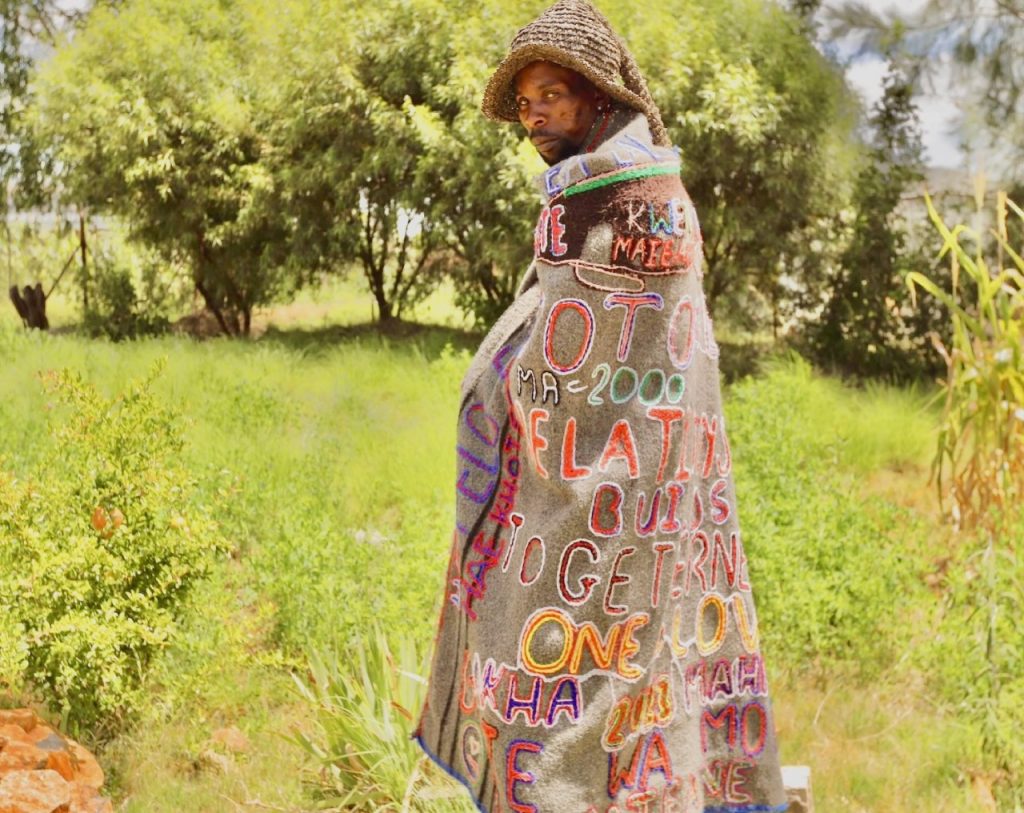
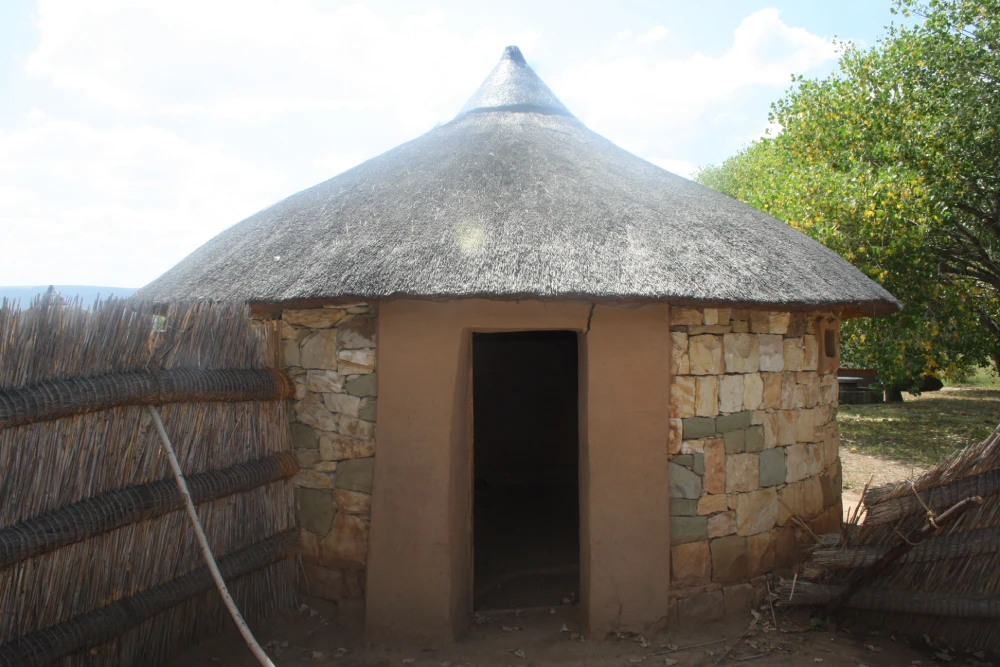
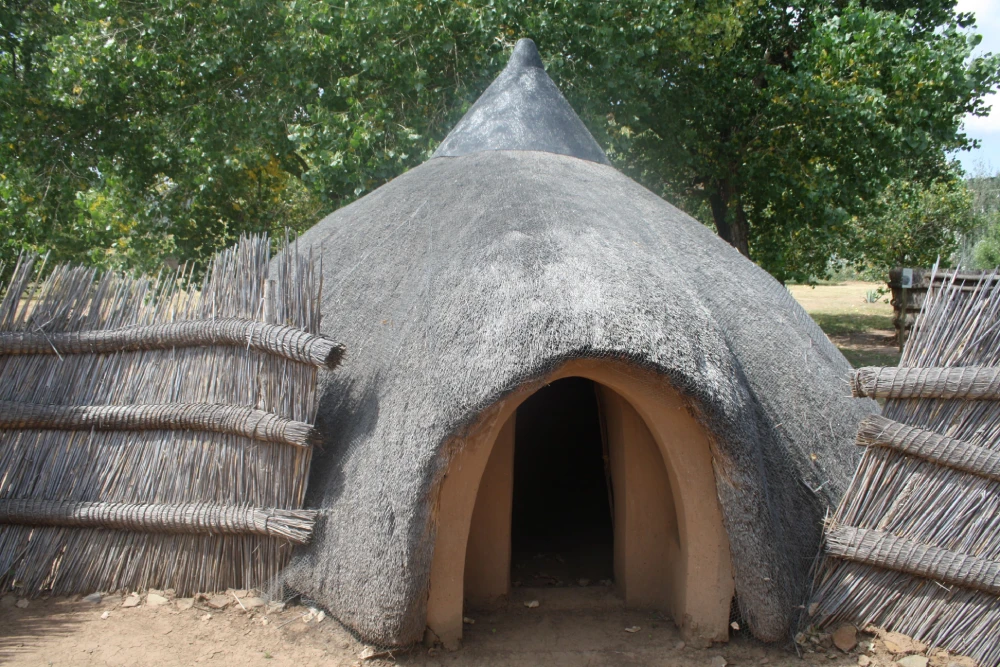
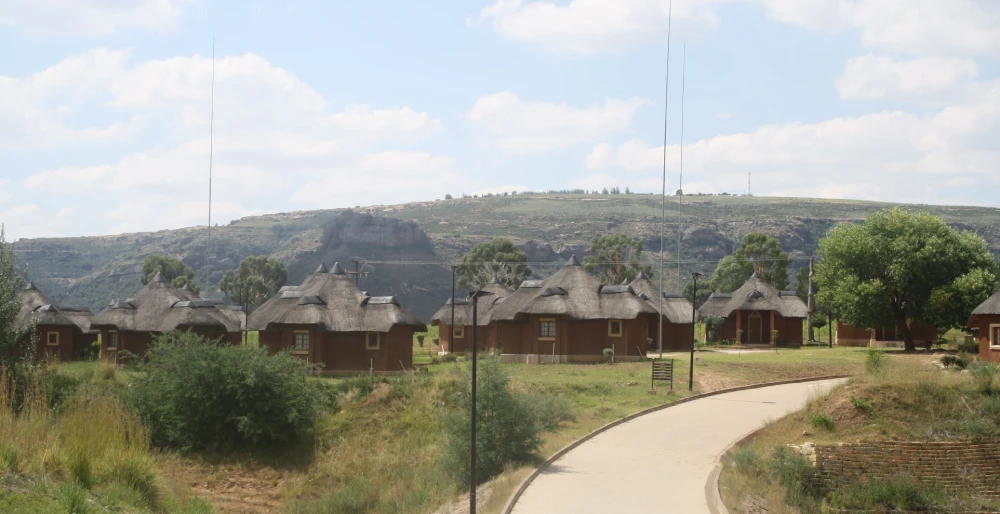
Language
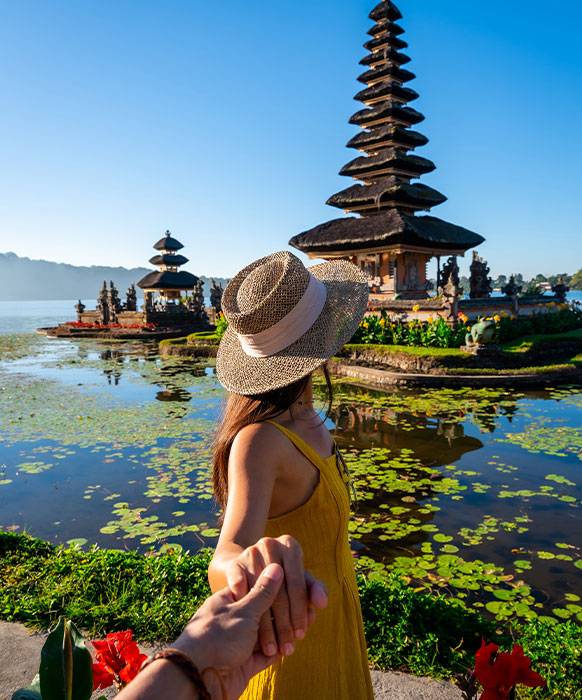



Natural Wonders
Maletsunyane Falls: One of the tallest single-drop waterfalls in the Southern Hemisphere.
Nestled near the town of Semongkong, approximately 125 km (78 miles) southeast of Maseru, Maletsunyane Falls is one of Lesotho’s most breathtaking natural wonders. With a staggering drop of 192 meters (630 feet), it is among the tallest single-drop waterfalls in the Southern Hemisphere. The falls cascade into a dramatic gorge surrounded by rugged cliffs and lush landscapes, creating a spectacular sight that leaves visitors in awe. The area’s unspoiled beauty, coupled with the thunderous sound of the cascading water, offers a serene yet exhilarating experience.
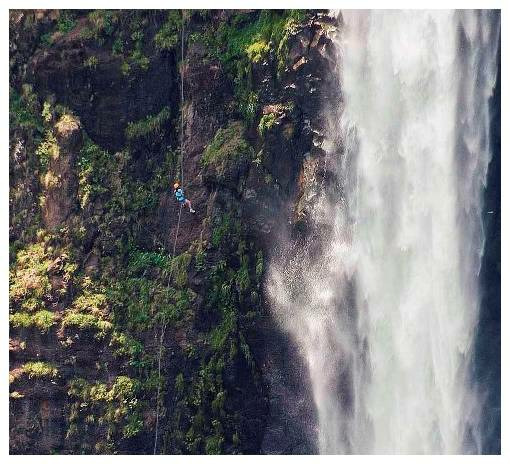
Maletsunyane Falls is also an adventurer’s paradise. It holds the Guinness World Record for the highest commercially operated abseil at 204 meters (669 feet), attracting thrill-seekers from around the world. The surrounding area provides plenty of activities, including hiking, pony trekking, and fishing in the nearby Maletsunyane River. For those seeking a deeper connection to nature, Semongkong Lodge offers rustic accommodations and guided tours, making it the perfect base to explore this iconic landmark. Maletsunyane Falls is more than just a waterfall; it’s a symbol of Lesotho’s raw natural beauty and a must-visit destination for any traveller.
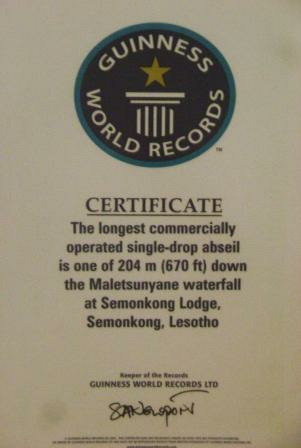

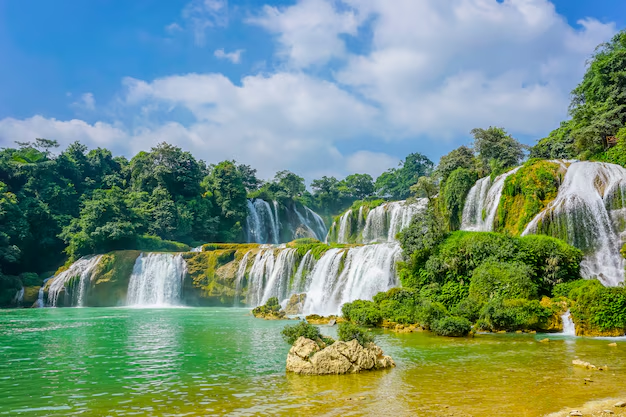
Kome Caves: Ancient cave dwellings still inhabited by descendants of the Basia clan.
The Kome Caves, located approximately 70 km (43 miles) east of Maseru in the Berea District, are one of Lesotho’s most remarkable cultural and historical landmarks. These ancient cave dwellings were carved into soft sandstone in the early 19th century by the Basia clan, who sought refuge from tribal conflicts and marauding cannibals. Remarkably, the caves have been continuously inhabited by the descendants of the original settlers, preserving a living connection to Lesotho’s past. The unique architecture, with its domed stone enclosures, blends seamlessly into the surrounding landscape, creating a stunning visual spectacle.
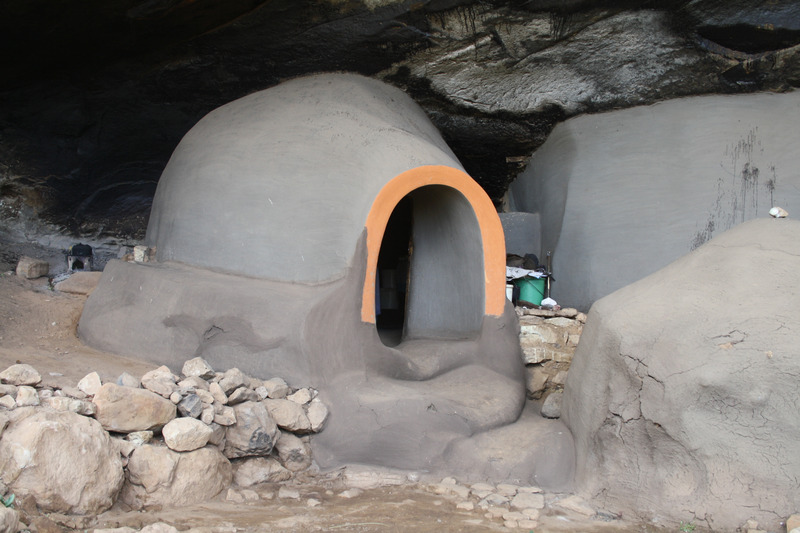
Visitors to the Kome Caves can explore the interiors of these traditional homes and learn about the fascinating history and traditions of the Basotho people. Guided tours provide insights into the resourcefulness and ingenuity of the inhabitants who adapted to this rugged environment for survival. The area also offers picturesque views of the surrounding mountains and valleys, making it a serene and educational destination. The Kome Caves stand as a testament to the resilience of the Basotho people and offer a unique glimpse into Lesotho’s rich cultural heritage.
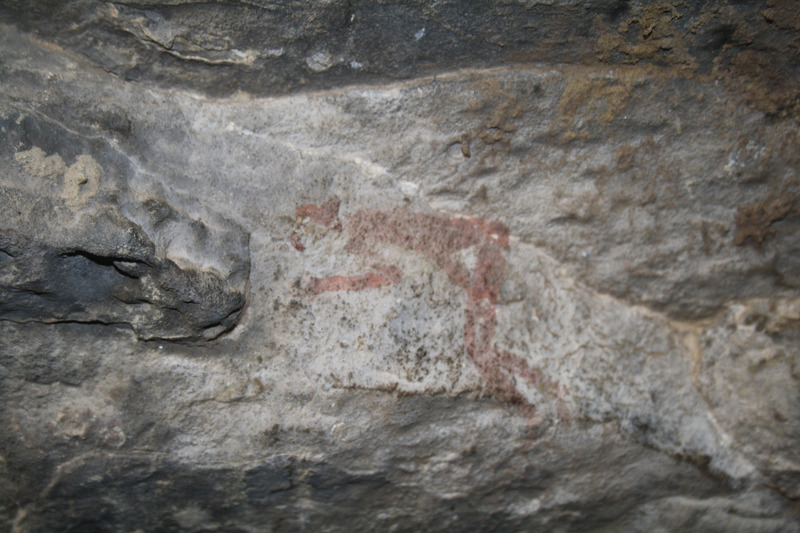
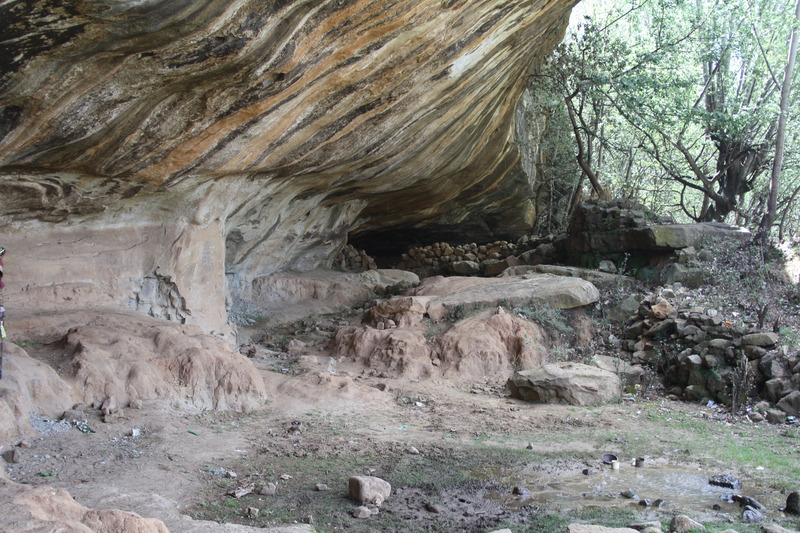
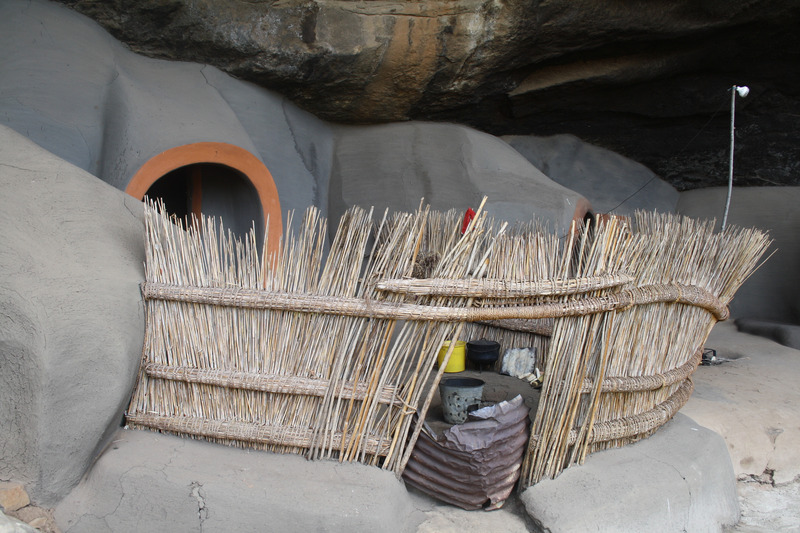
Dinosaur Footprints: Preserved tracks in Quthing that date back over 200 million years.
Lesotho is home to some of the best-preserved dinosaur footprints in the world, offering a fascinating glimpse into the prehistoric era. These fossilized tracks, dating back over 200 million years to the Jurassic period, are a testament to the region’s rich geological history. The footprints are primarily found in the Quthing District, with the most famous site located in Moyeni, about 160 km (99 miles) south of Maseru. These tracks, left behind by ancient creatures such as theropods and prosauropods, are among the most significant paleontological discoveries in Southern Africa.

The Moyeni site is easily accessible and offers visitors the chance to walk alongside these ancient trails, imagining a time when dinosaurs roamed the highlands of Lesotho. Other locations, such as the Matsieng area, also feature smaller collections of footprints, giving visitors multiple opportunities to explore this fascinating aspect of the country’s history. Guided tours at these sites provide valuable context, explaining how the tracks were formed and preserved in Lesotho’s sandstone landscapes.
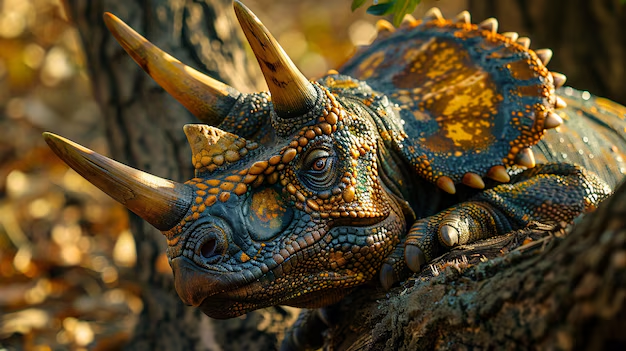
For science enthusiasts and curious travelers alike, the dinosaur footprints are a must-see attraction. They not only highlight Lesotho’s unique natural history but also offer a sense of awe and wonder at the ancient life that once inhabited this region. Combining scientific significance with stunning scenery, these sites are an essential part of any visit to the Kingdom in the Sky.
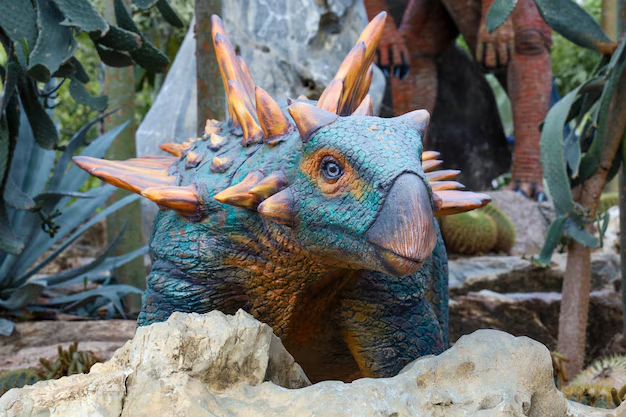
Fauna & Flora
Lesotho’s rugged landscapes and high-altitude environment are home to a rich array of fauna and flora, offering nature lovers and adventurers a chance to experience biodiversity unique to the region. From indigenous plants adapted to the alpine climate to rare wildlife species, the Kingdom in the Sky provides an ecological haven worth exploring.
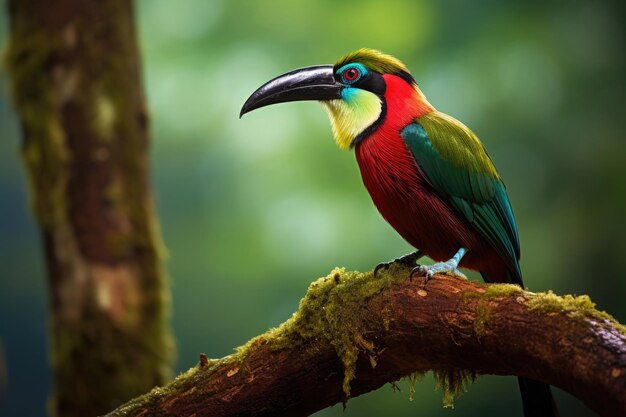
Fauna
Lesotho’s wildlife includes a variety of mammals, birds, and reptiles adapted to its alpine environment. While large predators are rare, visitors can spot antelope species like the mountain reedbuck and eland in the highlands. Birdwatchers will delight in sightings of the endangered Bearded Vulture and the Cape Vulture, both of which nest in the mountainous regions. Wetlands and rivers are home to amphibians and fish, including trout introduced to support recreational fishing.
For the best wildlife experiences, head to national parks like Sehlabathebe National Park and Ts’ehlanyane National Park, where nature thrives undisturbed. Whether hiking, birdwatching, or simply enjoying the untouched landscapes, Lesotho’s fauna and flora provide a captivating window into the region’s natural heritage.
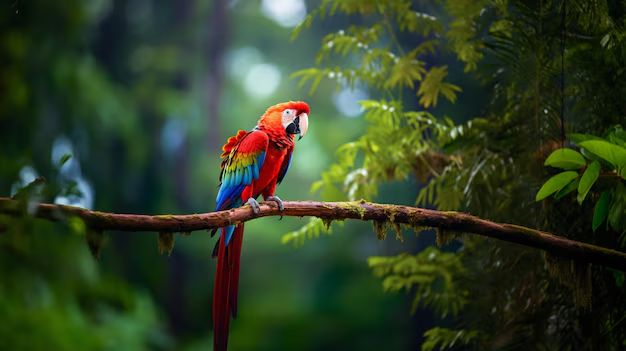
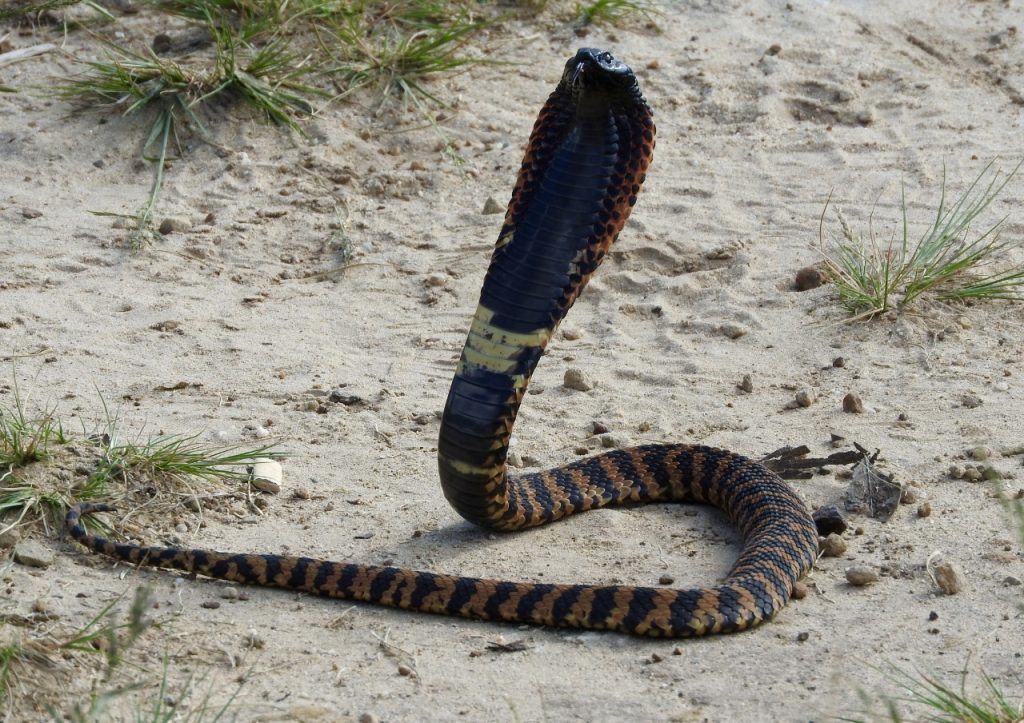
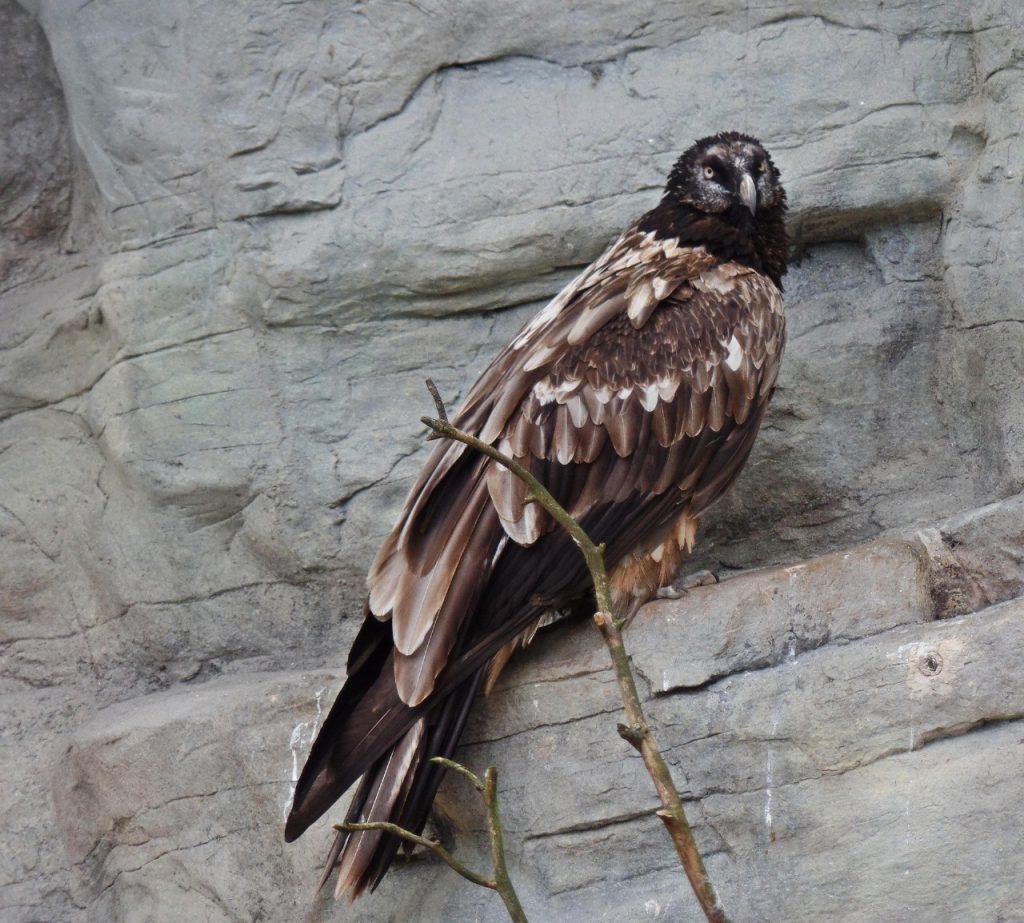
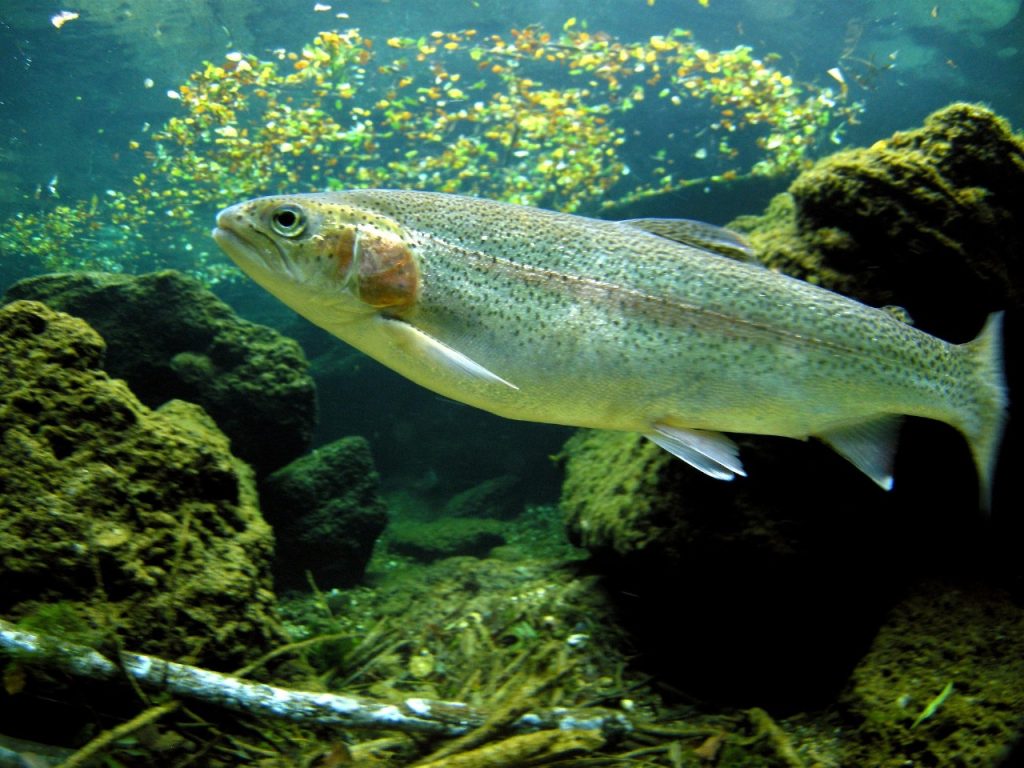
Flora
Lesotho’s flora is shaped by its high-altitude terrain and varying climatic conditions. Indigenous plant species include aloe polyphylla, also known as the spiral aloe, a strikingly beautiful plant endemic to Lesotho and found in the Drakensberg and Maluti mountain ranges. Other notable plants include mountain willows, highland grasses, and hardy shrubs that thrive in the country’s harsh winter conditions. Visitors can explore these plants up close at the Katse Botanical Gardens, established during the construction of Katse Dam to preserve Lesotho’s indigenous flora. The gardens provide a tranquil setting and an educational opportunity to learn about the country’s unique plant life.
